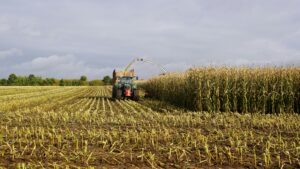Freeze drying or lyophilization, is an important part of pharma manufacturing. The method preserves sensitive biological materials and extends the shelf life of drugs. However, methods commonly employed tend to be energy and time-intensive. The pressure on the pharmaceutical industry to both minimize its carbon footprint and drive down operational expenses stands in stark relief. This makes the development of energy-efficient freeze-drying techniques for pharmaceuticals critical.
This article discusses new approaches to optimizing freeze-drying. This is in terms of energy conservation, process efficiency, and product quality. Through such advanced technologies, pharmaceutical companies can drastically reduce energy consumption, reduce production time, and even allow for the maintenance of the highest drug efficacy and safety standards.
Techniques For Pharmaceuticals: Optimizing Freeze-Drying Equipment Design
Freeze-drying equipment design is one of the critical areas where efficiency in the use of energy is sought. Innovations today take advantage of improved heat transfer mechanisms, reductions in energy losses, and system performance. So, let us see about this area contributing to energy-efficient freeze-drying in pharmaceuticals in-depth:
Improved Heat Transfer Systems
High-conductivity materials with optimized geometries are used in advanced heat transfer systems. This is to increase thermal efficiency. Furthermore, some modern freeze-dryers employ aluminum shelves with embedded fluid passages. It allows for more even and quicker heat transfer. Moreover, such systems frequently experience temperature modulations 50% faster than conventional stainless steel trays. They thus save overall cycle times and energy consumption. Additionally, some manufacturers are now exploring the use of phase-change material in shelf configurations. This can allow such materials to absorb and release energy because of temperature fluctuations more efficiently.
Vacuum System Improvements
The latest developments in vacuum technology have given more reliable energy-efficient pumps as well as sealing mechanisms compared to the earlier ones. Furthermore, the variable speed vacuum pump operates at a variable rate. It depends upon the stage of operation in the freeze-drying cycle and usually consumes less power during off-peak demand. Moreover, some systems often employ multiple small pumps instead of a single large unit. This is because it allows better load management while saving some energy. Magnetic fluid seals and other advanced seal technologies minimize leakage and more efficiently maintain vacuum integrity. This reduces the overall energy required to optimize operating pressure conditions.
Insulation and Heat Recovery Systems
Modern freeze-dryers can decrease heat loss by as much as 30%. This is with enhanced insulation materials, such as aerogels or vacuum-insulated panels that are much better compared to traditional insulation. It, in turn, decreases the amount of energy required to reach critical temperatures. Furthermore, freeze-drying equipment is increasingly being integrated with heat recovery systems to capture the waste heat produced during the process and to recover it for reuse. Moreover, some designs incorporate heat exchangers to recover heat from the condenser. This is returned to help preheat incoming air or assist in regenerating used desiccants. Such designs can save as much as 25% on energy in certain applications.
Smart Control Systems and Automation
Advanced control systems can optimize freeze-drying parameters based on a timely and dynamic monitoring process and predictive algorithms. Such systems can vary shelf temperatures, pressure in the chamber, and cycle times as per the product characteristics and environmental conditions. It optimizes energy consumption without compromising product quality. Moreover, some advanced systems have algorithms based on machine learning. It analyzes historical information to make predictions regarding optimal process parameters for different types of products. It improves energy efficiency in pharmaceuticals over time. Additionally, automated loading and unloading minimize human intervention. This reduces the opening of doors for frequent loading and unloading and ensures more consistent process conditions.
Energy-Efficient Freeze-Drying: Advanced Process Optimization Techniques
Process optimization is key to achieving energy efficiency in freeze-drying techniques for pharmaceuticals. Optimization of the lyophilization process in various aspects enhances energy saving at minimal sacrifice in product quality. So, let us see some of these sustainable pharmaceutical freeze-drying processes ahead:
Controlled Nucleation
Controlled nucleation techniques, like pressurization-depressurization cycles or using specific ice-nucleating agents, initiate freezing at a higher temperature and in a more uniform way. This allows the production of larger ice crystals that are easier to sublimate, thus reducing drying time and energy. Furthermore, studies have shown that controlled nucleation can reduce primary drying times by up to 40%. This is compared to spontaneous nucleation. Moreover, some advanced systems utilize ultrasonic or electrical nucleation. This offers more control over ice crystal formation. It leads to enhancements in energy efficiency in pharmaceuticals and also product quality.
Annealing Optimization
Optimized annealing can be markedly effective for the subsequent primary drying step. The annealing temperature, and the period for which it is applied, determines the cake structure consistency and pore size. So, these factors can allow for easier sublimation vapor flow in the drying operation. Furthermore, this can shorten primary drying by up to 30% times in some instances. Moreover, new annealing techniques such as cyclic annealing or temperature oscillation are currently under investigation to further expand this effect. These methods involve alternating between different temperatures during the annealing phase, thereby encouraging significantly larger and also more interconnected ice crystals.
Primary Drying Optimization
Advanced primary drying techniques hold the product near its collapse temperature, maximizing the rate of sublimation. This is achieved by controlling shelf temperature and chamber pressure. Furthermore, innovative approaches include microwave-assisted freeze-drying techniques for pharmaceuticals. This can shorten primary drying times by up to 20% compared to conventionally freeze-dried material. Another emerging technology is atmospheric freeze-drying. It functions at elevated pressures and may be more energy-efficient for specific product varieties. Experts also consider the utilization of inert gases in the primary drying step to improve heat and vapor transfer during this critical phase.
Secondary Drying Refinement
Improvement techniques in secondary drying involve successfully removing bound water from the product without causing any thermal degradation. Furthermore, some of the systems currently available on the market feature advanced techniques. This includes stepped temperature ramps and dynamic control of pressure to optimize desorption rates. Moreover, some systems include the integration of near-infrared or Raman spectroscopy for direct real-time measurement of residual moisture levels. It, thus, allows an endpoint to be ascertained and prevents over-drying. Novel desorption-enhancing agents are also under development that can effectively enhance the removal of bound water at relatively lower temperatures. So, this can reduce the energy required for the secondary drying phase by up to 20%. It can also ensure maximum stability of the final product.
Emerging Freeze-Drying Techniques For Pharmaceuticals
A new generation of freeze-drying techniques for pharmaceuticals is bringing changes to the approach, giving innovative solutions in terms of energy and quality improvements. So, let us see some innovations in freeze-dring technologies ahead:
Supercritical Fluid-Assisted Freeze-Drying Techniques For Pharmaceuticals
Free-drying assisted by supercritical fluid uses supercritical CO2 to improve the drying process. The technology can freeze dry at temperatures significantly higher than any known conventional freeze-dry techniques. So, this can result in energy conservation. Furthermore, the supercritical CO2 enables the removal of water from the product without disrupting the porous structure. This technology is better applied to heat-sensitive products and can be very effective in terms of the quality of a product and the time needed for the drying process. This technology poses a challenge during its scale-up and optimization for specific types of products.
Quality by Design (QbD) Implementation
Quality by design is becoming extremely effective in freeze-drying techniques for pharmaceuticals. This approach defines key quality attributes of the final lyophilized product and the critical process parameters associated with those attributes. Furthermore, robust freeze-drying cycles which would both be energy-efficient and yield products that are consistently high in quality can be designed using design of experiments (DoE) and process analytical technology (PAT). Moreover, QbD in freeze-drying keeps cycle times low, ensures consistent product quality, and allows for lower energy consumption through optimized process parameters.
Spray Freeze-Drying
This method comes as a result of combining spray-freezing and lyophilization. It, thereby, yields highly porous particles that have excellent rehydration properties. Furthermore, the sprayed droplets have much larger surface areas than the original droplet structure. So, this method usually cuts down on drying times. Moreover, the resulting particles frequently present better stability and dissolution properties than traditionally freeze-dried products. Additionally, energy efficiency in pharmaceuticals is improved due to the shortening of primary drying times and the possibility of continuous processing. However, optimization of spraying parameters, and homogeneity of particle size distribution, are the challenges. Research work on it focuses on scaling up the technology and controlling the process.
Continuous Freeze-Drying Systems
Continuous freeze-drying techniques for pharmaceuticals open large potential energy savings compared to conventional batch processes. Furthermore, these systems have more efficient utilization of equipment, reduced idle times, and better recovery of the heat. Moreover, this continuous processing can lead to a better quality product with low cycle times. Recent studies are towards the development of dependable feeding and discharge mechanisms. This is to ensure uniform treatment of the product and to obtain process parameters for continuous processing. Though in its initial stage of research, there are promising prospects for the new continuous freeze-drying systems to revolutionize pharmaceutical lyophilization processes.
To Sum Up
Energy-efficient freeze-drying techniques for pharmaceuticals are changing pharmaceutical manufacturing. This is with benefits in terms of reduced energy utilization, lower operation costs, and higher product quality. Moreover, advanced designs of equipment, smart control systems, and optimized process techniques will become integral steps in achieving sustainable and efficient lyophilization with the continued progress of the industry.
To get familiar with all these, participate in the 3rd Net Zero Life Sciences Summit which will be held on October 29-30, 2024 in Düsseldorf, Germany, and learn more about the best practices of modern energy-efficient pharmaceutical production methods. This is an industry meeting aimed at professionals centering on the current trends in the manufacturing of drugs and medical devices. It will also be filled with a lot of case studies and networking opportunities to stay one step ahead. Register now!




